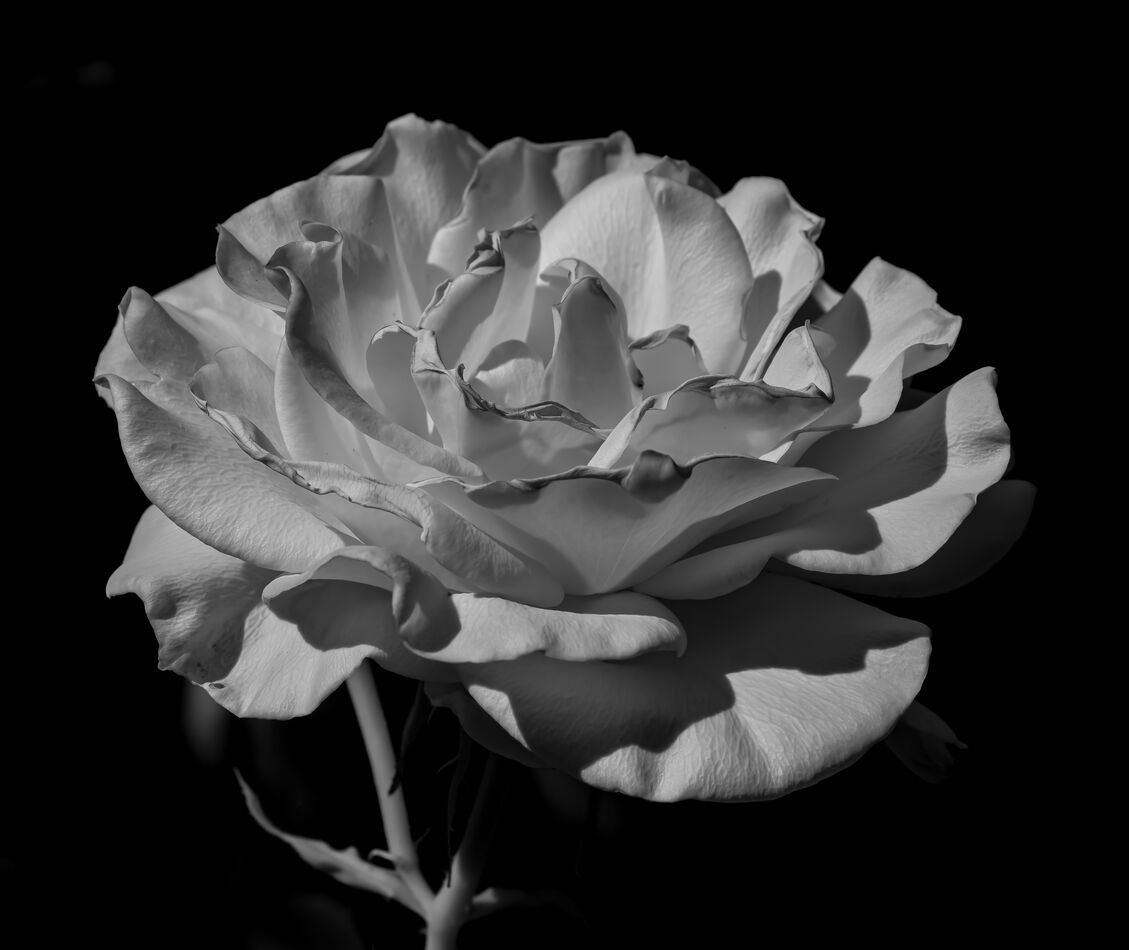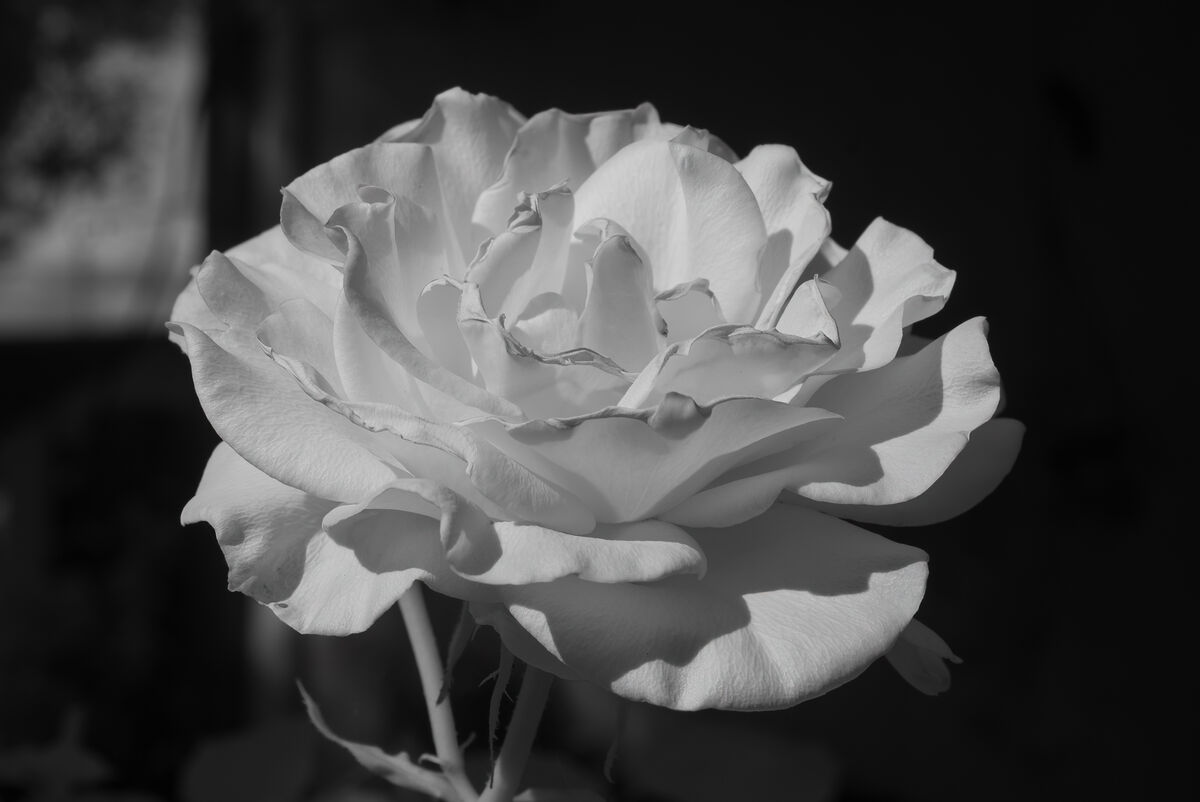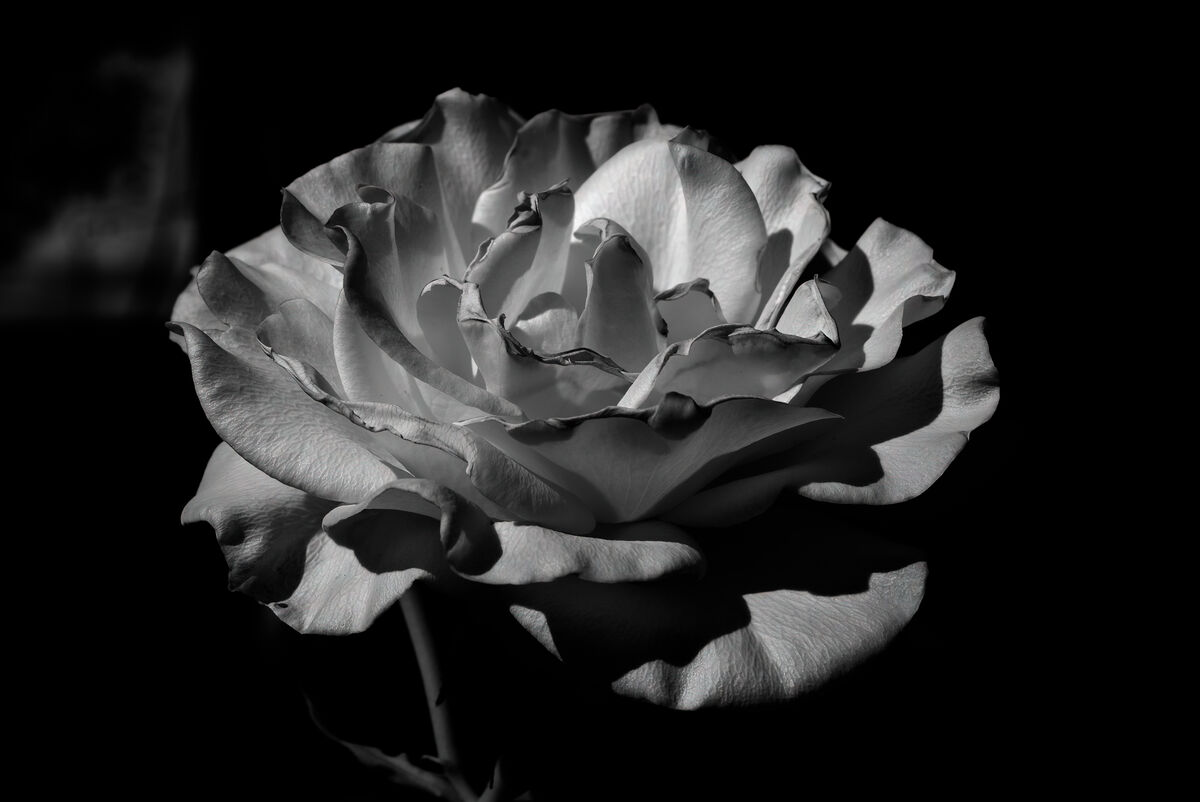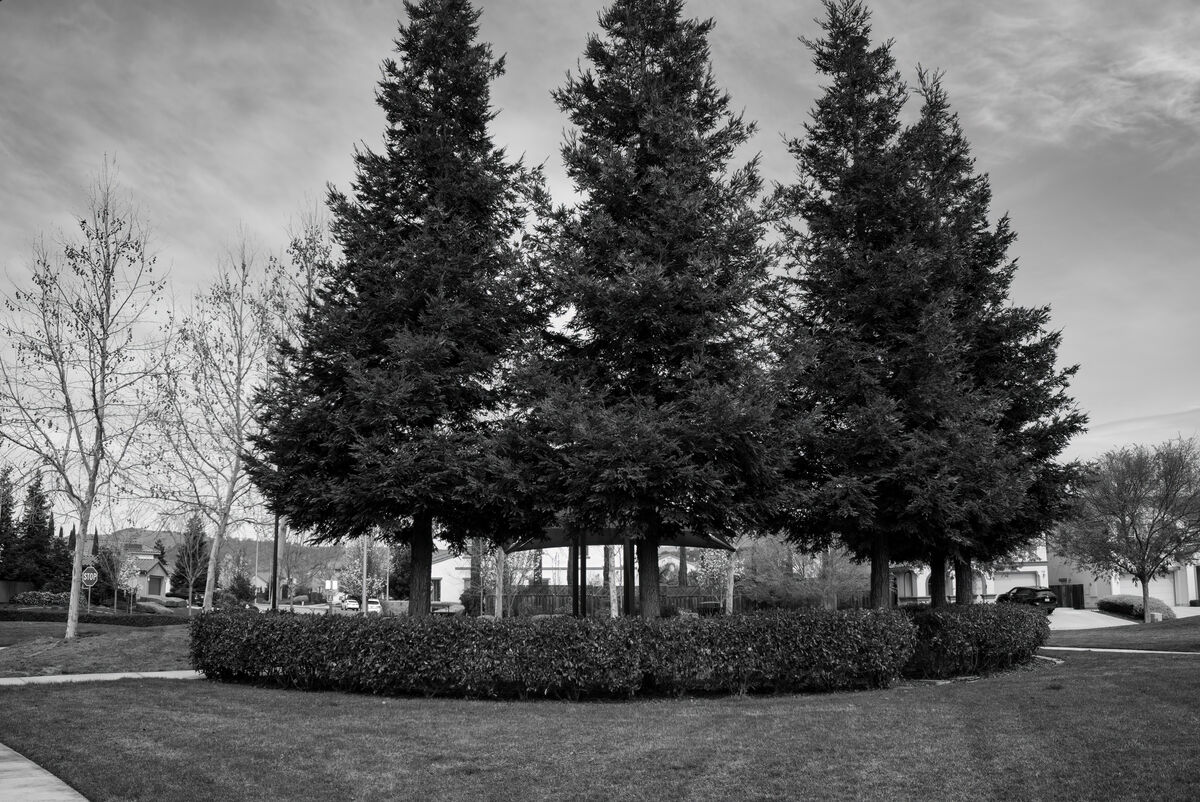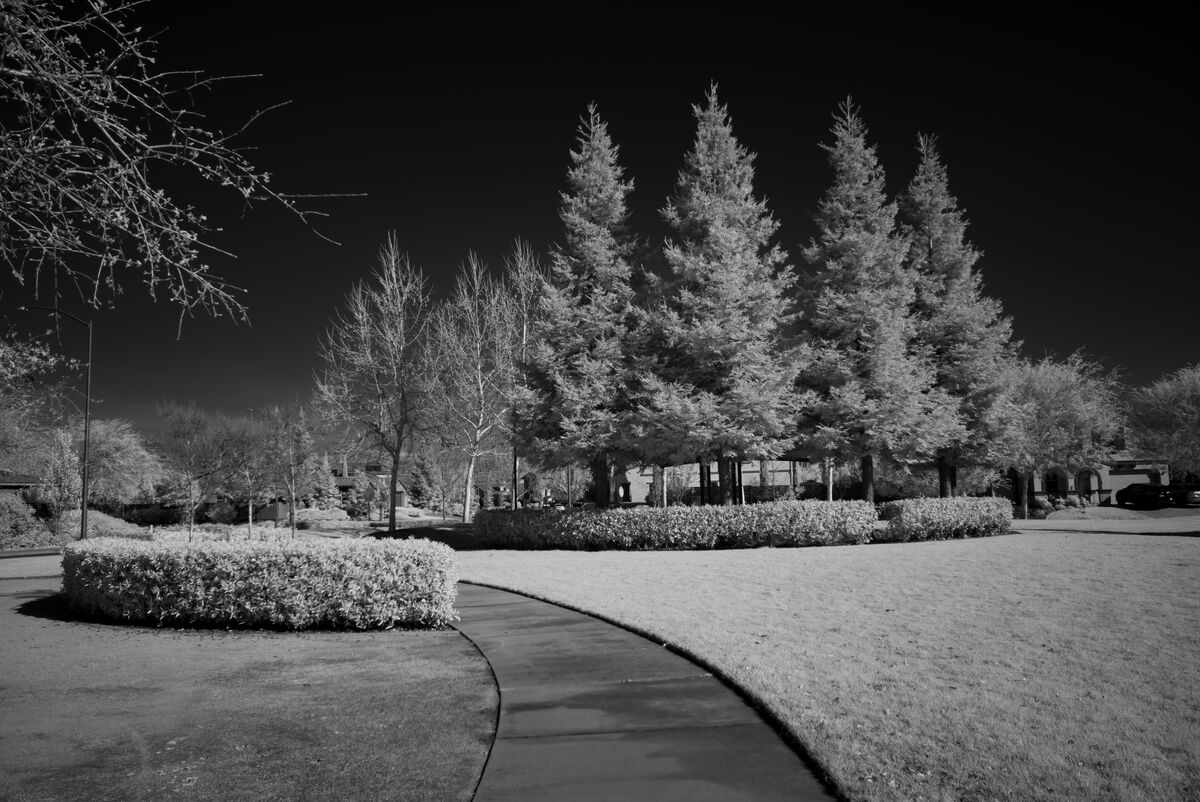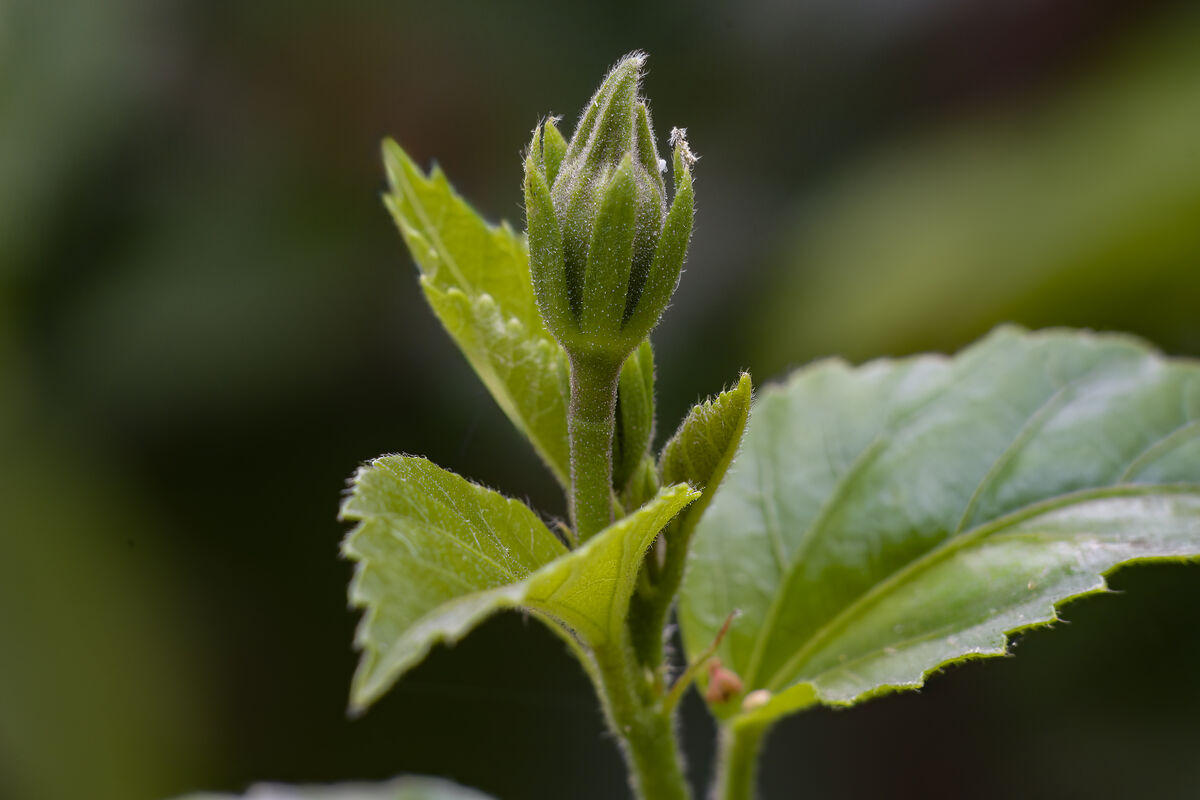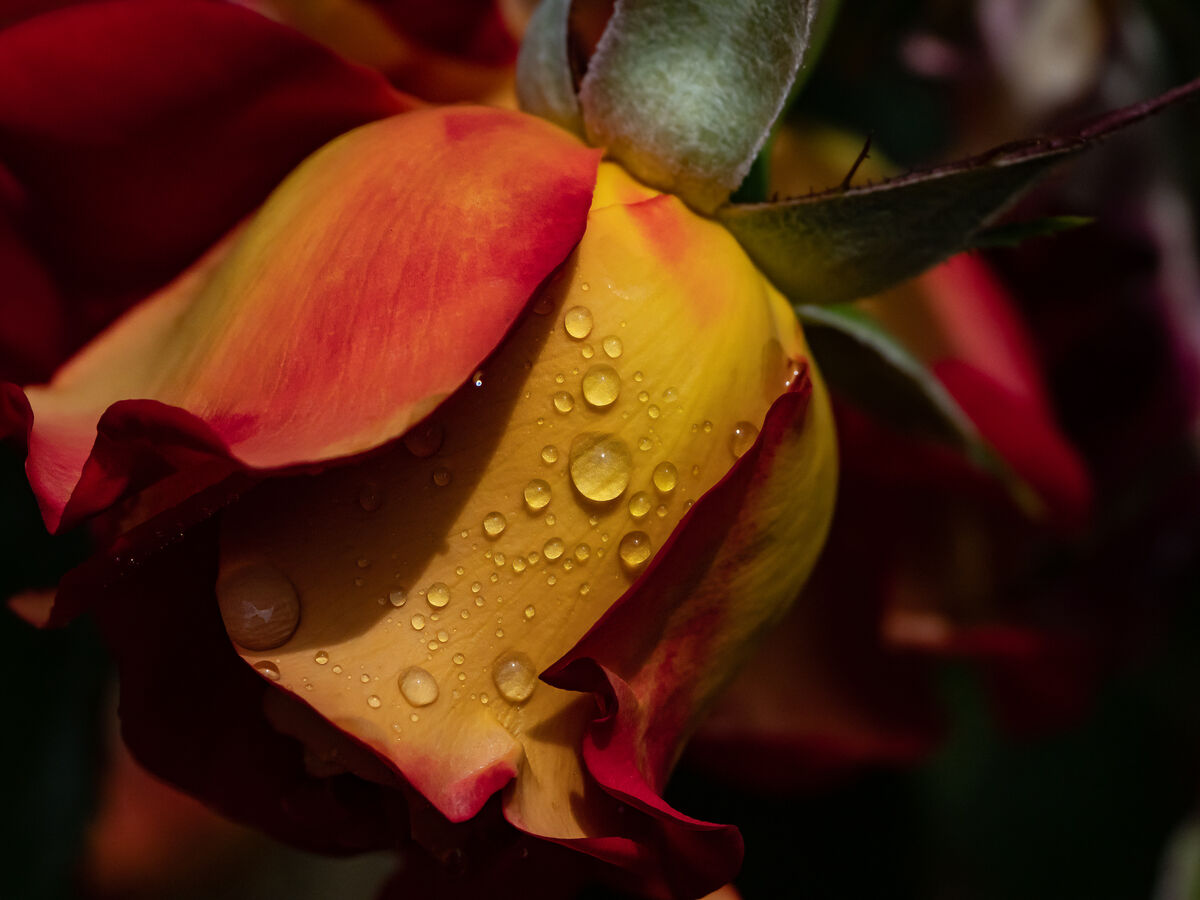Posts for: JimH123
Aug 24, 2023 00:46:54 #
Ysarex wrote:
There is a discernable difference in resolution/sh... (show quote)
Here is a red rose with a red filter (and some IR light that goes through the red filter) on a mono sensor.
Of course, I still have the option for it to be whiter as in image2.
Or even make it darker as in image 3.
Using software colored filters makes no sense. But I still have Photoshop to play with it.
Aug 23, 2023 23:33:02 #
dkeysser wrote:
I am thinking about having one of my digital camer... (show quote)
I have had a camera modified at monochromeimaging.com where this person specializes in Sony e-mount cameras. I have loved using a monochrome camera and I find that I have used this camera far more than I thought I would use it.
I had the option to remove the UV-IR filter also which makes this camera full spectrum.
Before talking about a couple sample images, some are confused about the B&W setting on their cameras. Let me explain for them that it is not a true B&W image. The camera still captures in RAW (which is in color) and then the camera does its own conversion to B&W in which you are not in charge of what the camera does, and does it's own demosacing for conversion to JPEGs. Most likely, if you were to not let the camera do the conversion, but instead do it yourself in post processing, you could do better.
Image 1, I used an UV-IR cut filter in order to only use visible light, and you can see how leaves appear darker.
Image 2, I removed the UV-IR cut filter, and replaced it with a 720nm filter. The image is in the same direction, but I see I was not as close to the center trees. The filter has lightened the grass and trees as the camera is now sensitive the reflected IR light. I tend to favor either 590nm or 720nm as they both allow some visible light to mix in (more with the 590nm).
I have been very pleased with the results and struggle to match it using a color camera and converting to monochrome. B&W done with a monochrome sensor provides a pleasing grayscale that I like a lot. I also find that as I use longer wavelength filters such as 850nm, that the richness of the grayscale is reduced and the images tend to be harsher.
There is a noticeable difference in resolution in that the monochrome sensor needs no demosaicing. Demosaicing causes that numerous pixels are averaged together so that a red, a blue and a green value can be computed for each output pixel. Monochrome sensors don't need this and use the sensor results directly. Where I see the biggest impact on this is astrophotography where stars are point sources of light and demosaicing is actually detrimental to the stars IQ.
If I had it to do over again, I would have converted a full frame camera and not the Sony APS-C A6300 that I used. The reason for this is that the A6300 only has the option to use lossy RAW compression and its lossy results can be seen in the image when you know what to look for. This deficiency does not seem to be a problem in the older A7ii which also allows for uncompressed RAW for which the A6300 does not even have.
There is a software application called "monochrome2DNG" that converts the RAW files into a non-demosaiced DNG file that doesn't need much post processing.
Aug 23, 2023 11:49:22 #
StanMac wrote:
How does one determine what entity manufactured a Vivitar lens? And which of those manufacturers produced the best lenses for the Vivitar brand?
Stan
Stan
You look at the serial number. For this particular lens, the lenses made by Komine started with the digits "28". You can usually find this information with a Google search.
Aug 23, 2023 09:47:32 #
bw79st wrote:
Ditto!
But the one good use for the 4/3 to m4/3 adapter is it is a lot more accurate than any of the legacy lens to m4/3 adapters which all seemed to not let me focus to infinity. I put a C/Y to 4/3 adapter on my Zeiss lenses as they are smaller and more accurately machined. That then is attached to an Oly or Lumix 4/3 to m4/3 adapter to use on my m4/3 bodies. Works fine!
But the one good use for the 4/3 to m4/3 adapter is it is a lot more accurate than any of the legacy lens to m4/3 adapters which all seemed to not let me focus to infinity. I put a C/Y to 4/3 adapter on my Zeiss lenses as they are smaller and more accurately machined. That then is attached to an Oly or Lumix 4/3 to m4/3 adapter to use on my m4/3 bodies. Works fine!
That problem I haven't encountered. I get infinity focus with all my dumb m4/3 adapters.
This includes a-mount to m4/3, Minolta MC/MD mount to m4/3, PK mount to m4/3, m42 to m4/3, and more.
Aug 22, 2023 23:01:05 #
imagemeister wrote:
I was not aware of the LEA-4 being modified .......not sure how much confidence I would put in it - especially with the 500 Reflex ! The DOF with the 500 Reflex is razor thin ..... 
The Nikkor appears to have less contrast - and to get best contrast from these Reflex lenses a good lenshood helps.
I think if I were serious, I would get the LEA-5 .......

The Nikkor appears to have less contrast - and to get best contrast from these Reflex lenses a good lenshood helps.
I think if I were serious, I would get the LEA-5 .......
Using the monster adapter, which is a new circuit board that replaces the one in the LA-EA4, along with the mirror, adds the ability to focus directly on the sensor rather than the path the LA-EA4 takes with reflection onto the SLT mirror to the focus sensor. It works well and gives sharp focus.
Here are some things to keep in mind:
1. It is a Chinese company that has figured this out. There is a report of someone bricking their camera by putting it on or off without first turning off the camera. I make sure that I do not do this, just in case.
2. There are two different camera focus speed considerations. Sony found a way to focus faster with the LA-EA5, but not all Sony cameras can use the LA-EA5. Originally, only the A6600 and the A7Riv could use it and since then, some newer releases now support it. The monster adapter people were able to watch how the LA-EA5 was doing this with cameras that supported it using a logic analyzer and were then able to emulate that behavior. Sony didn't share with them any specs. And it actually is working.
-- Focus speed with cameras that cannot use the LA-EA5 -- Focus is noticeably slower
-- Focus speed with cameras that can use the LA-EA5 -- Focus is considerably faster
Overall, I still find the LA-EA5 to focus a bit faster than the Monster Adapter, and I prefer the fact that all my A-mount lenses can be used, including those with internal motors. But this is only for my A6600. With my A7iii, I can use the LA-EA5 with my SSM lenses only and have to revert back to the LA-EA4 for A-mount lenses.
3. All the Sony A6xxx and A7x cameras can use the Monster Adapter. I have an A6600 for which it works, and an A7iii for which it will not work. The Monster Adapter does not support SSM lenses at all.
4. Not all A-mount lenses can work with the Monster Adapter. All my A-mount lenses work with the LA-EA5, but not all Minolta A-mount lenses work with it (for example my Minolta 35-105mm lens), and my Tamron, Tokina and Sigma A-mount lenses do not work with it. The monster adapter people have to manually add each lens into the Monster adapter firmware (they are on version 6) and with each release, perhaps new lenses are added.
5. With the Minolta 500mm Reflex lens, they have made it work with all focus points. Not limited to just the center like the LA-EA4 and LA-EA5.
After getting the Monster Adapter and using my LA-EA4 for it, I missed it enough to purchase a used LA-EA4 to replace it. I rarely use the Monster Adapter now.
Aug 22, 2023 22:24:17 #
radiojohn wrote:
I got an AF 4/3 to M4/3 adapter out of curiosity and am just wondering if there is any real difference in performance between the same basic kit lens in the larger mount vs. the smaller mount? [aside from size!]
I played that game for awhile and got frustrated at the slower focus speeds using the EM1 and EM1ii. And with the EM5ii which couldn't do phase detect, it wasn't even possible to get good focus.
Finally sold my AF 4/3 lens and only use m4/3 lens and life is good again.
Aug 21, 2023 22:04:22 #
Curmudgeon wrote:
The horsemen are AI generated from MidJourney, the background shot is mine. The horsemen were isolated from their background using the Photoshop Select and Mask tool. Composite completed in PS in RGB format. Then processed in NIK Silver Efex Pro.
I li,e the idea of doing something fun.



Aug 21, 2023 19:43:13 #
imagemeister wrote:
Somewhere I think I remember seeing that this is only a 4 element lens ! For some reason, it was never very popular - I have never had one - which somewhat speaks to their rarity ....
There are lots of reviews on this lens. And lots of individuals stating that it is one lens that they won't be selling. And you are correct. 4 elements ( in 4 groups). Was built from 1975 to 1981. Supposedly, it can be suscepable to purple fringing.
I find this to be a very easy and fun lens to use. At 1:2, the focus distance is probably 20 inches.
I have 5 Vivitar lenses made by Komine, and I like 4 of them. The 4 I like are the 55mm f2.8 1:1 macro, and the same thing in 90mm and a non-macro 135mm f2.8, as well as this 135mm close focusing lens.
The one I do not like is the 28-90mm Series 1 also made by Komine. I find older zooms tend to be inferior to modern zooms, and I don't find this one to be very sharp, plus the edges just don't look good at all. I hear good things about other Series 1 lenses. But not this one.
Aug 21, 2023 16:52:32 #
I'm sure I didn't need another macro lens. But this Vivitar 135mm f2.8 Close Focusing Lens (made by Komine) is certainly fun to use. But it is only 1:2, so perhaps it doesn't count as another macro lens. Totally manual focus, and the focus rotates 540 degrees in going from infinity to 1:2. Incredibly easy to get a good focus.
Attached is a handheld shot at 1:2 of a Hibiscus flower bud that is not yet opened. These buds are quite fuzzy which can be seen if you hit the download button, and then click again.
There were several spider web threads running from the tip of the bud down to the leaves for which I used the Photoshop Remove Tool to make them go away.
Attached is a handheld shot at 1:2 of a Hibiscus flower bud that is not yet opened. These buds are quite fuzzy which can be seen if you hit the download button, and then click again.
There were several spider web threads running from the tip of the bud down to the leaves for which I used the Photoshop Remove Tool to make them go away.
Aug 21, 2023 15:25:53 #
I would like to thank those for their kind, encouraging comments on the water drops on the rose. I had no idea how this would turn out when I originally took the picture, but it certainly showed something I wasn't fully expecting.
Aug 18, 2023 20:00:58 #
You will need to hit the download and then click again to see this, but the individual water droplets are acting as magnifying glasses and the results can easily be seen.
Using an Olympus EM1ii with the 75-300mm lens at 75mm along with the Minolta #2 closeup filter which happens to be +3.8 diopters.
Using an Olympus EM1ii with the 75-300mm lens at 75mm along with the Minolta #2 closeup filter which happens to be +3.8 diopters.
Aug 18, 2023 19:49:19 #
ralyn wrote:
Thanks for the lead. I decided to go with MPB and ordered a like new M5 and like new 15-45 lens for $371. Another great company similar to KEH. Can't believe their prices, service, and quality of equipment.
Be sure to do us a comparison and let us know what you think.
Aug 18, 2023 14:10:18 #
ralyn wrote:
I currently shoot with an Olympus em10 mk2 which h... (show quote)
You are just shooting JPEG. I use several Olympus camera and shoot in RAW, and I get wonderful colors from these cameras. The richness of the color happens during the Demosaicing processed used, either by the camera for JPEGs, or in post processing RAWs with editing software. The two results are likely to be a bit different.
Usually, I use Lightroom, but sometimes use DxO Photolab.
There is no exact science for Demosaicing, and there are many different Algorithms which involve different ways to average different camera pixels together to come up with suitable colors for the image pixels. For example, RawTherapee gives a user about a dozen Demosaicing algorithms to choose from, and of course Adobe uses their own algorithm and same with the other editing software companies.
Let me also add that there are settings in camera to control the JPEG images too. On the Super Control Panel in the upper right there is a setting for Picture Mode. Usually, Natural is the best choice. There is a Vivid setting, but I think it is over the top and I don't like it. Additionally there are settings for Sharpness, Contrast and Saturation. Try the different settings and see what you like.
Aug 17, 2023 21:07:57 #
agillot wrote:
I wish digital camera maker would still come out with a 10 mp or more if possible CCD sensor on one model . That old technologies sensor i thought was special . On the other hand a used camera goes around $50 .
The sensor manufacturers do not want to make CCD sensors any longer. The astrophotography crowd favors CCDs, and even those cameras are now moving to CMOS. I still have a CCD Astro camera and I won't be selling it.
Aug 17, 2023 21:00:07 #
topcat wrote:
Rob Shea has actions that adjust the white balance. I use it in Camera Raw all the time.
Yep, Rob Shea gives us the choice. WB in Lightroom, or do it in Photoshop.
